




SpeakEasy produces intimate, entertaining plays and musicals that are new to Boston and compel thoughtful conversation. We champion new talent and future arts leaders, alongside a diverse community of experienced local theatre professionals who share our devotion to excellence. We treat our artists, audiences, and supporters as collaborators, working with us to make Boston a city that is sustainable for artists.
Executive Director: David Beardsley
Artistic Director: Paul Daigneault
Director of Marketing & Communications: Jim Torres
Director of Development: Ben Walsh
Production Manager: Dominique D. Burford
Community & Artistic Programs Manager: Alex Lonati
Equity, Diversity, & Inclusion Consultant: Kira Troilo
Associate Manager of Production & Operations: Claudia Bennett
Development Coordinator - Operations & Events: Randy Biagas-Hill
Development Coordinator - Grants & Annual Fund: Erin Davis
Creative Services Coordinator: Paulina Martz
Social Media & Digital Marketing Coordinator: Christian Krenek
Artistic and Literary Fellow: Huan Bui
Michael Appell, Julita Bailey-Vasco, David Beardsley - Executive Director, Matt Bell, David Winfield Brown, Cathy Cotton, Paul Daigneault - Artistic Director, Kerry A. Dowling, Jonathan Dyer, Andrew Fullem - Co-Chair, Constance Gist Guindo - Co-Chair, Evan Michael Haas, Lovely Hoffman, Susan Irvings, Joey Riddle - Treasurer, Brian Robinson, Alejandro Simoes, Douglas Spencer, Candice Springer, Ann Teixeira, Hannah Weisman, Clea Winneg - Clerk, Angela Yarde
Michael Appell - Chair, Bob Band, Gene M. Bauer & Ellen Shortell, Susan Black, Brian Bourquin & Paul Mataras, Kristina Brendel, Gregory Bulger & Richard Dix, A. Joseph Castellana & Jim Seligman, Stacey & Chris Constas, Anne d’Avenas, Richard Davies, Curly Glynn, Laura Haas, Ken Hirschkind, William E. Kelly, Marie Longo, Keith MacDonald & Thomas Webber, Jeffrey Mello, Roberta Orlandino, Robert Pascucci, Ellen Piccioli, Kenneth & Rise Shepsle, Hal Tepfer, Julianne Yazbek

SECTION ONE: OUR COMMITMENT
COMMITMENT STATEMENT | P. 6
DEFINITION OF TIME FRAMES | P. 7
SECTION TWO: INTERNAL OPERATIONS
BOARD LEADERSHIP | P. 10
ORGANIZATIONAL CULTURE & EMPLOYEE RETENTION | P.12
TRAINING, SKILLS, & COMPETENCIES | P.15
RECRUITING & HIRING PRACTICES | P.17
DEMOGRAPHIC TRACKING AND DATA | P.19
SECTION THREE: ARTISTIC PROGRAMS
PROGRAMMING FOR INCLUSIVITY & EQUITY | P.22
PROGRAMMING FOR ACCESSIBILITY | P.24
SECTION FOUR: EXTERNAL SERVICES AND COMMUNICATIONS
WELCOMING & INCLUSIVE COMMUNICATIONS | P.28
AUDIENCE DEVELOPMENT, PARTNERSHIPS & FUNDRAISING | P.30
PERFORMANCES AT THE CALDERWOOD | P. 31
GLOSSARY | P.34



At SpeakEasy, our commitment to evolving into a fully equitable, anti-racist and inclusive theatre company is not just an aspiration, but at the very heart of our identity. Our journey is continuous, and our dedication to this cause is unwavering. In February 2021, we laid the foundation with our Equity & Anti-Racism Action Plan, charting a course with clear commitments and measurable actions for both the immediate and distant future. Since unveiling this plan, we have released yearly Progress Reports, candidly sharing our achievements, ongoing challenges, and future directions.
However, we know more now than we did in 2021, and we have adjusted our goals to reflect that ongoing growth and learning. We understand that the work of equity and anti-racism is perpetual. In this spirit, we pledge to not only pursue goals we previously set forth, but to rigorously test, re-evaluate and refine them, drawing on feedback from our community to continually redefine them. This iterative process ensures that our actions remain aligned with both our mission and the progress we seek to make. And with that spirit, we remain committed to transparently sharing our learnings, challenges, and milestones as we progress on this path.
Your support in these endeavors is invaluable to us. For any inquiries or discussions about our ongoing work, please feel free to reach out to our Community & Artistic Programs Manager, Alex Lonati, at alexlonati@speakeasystage.com, or our Equity, Diversity & Inclusion Consultant, Kira Troilo, at kiratroilo@artandsoulconsulting.com.

To achieve the goals detailed in each section of the plan, SpeakEasy has identified “changes implemented” “continuing practices,” “immediate changes,” “short-term initiatives,” and “long-term goals” to lay out an approximate time frame for the work. Priorities and the sequencing of initiatives may change over time, depending upon the continually evolving financial and social environment in the Greater Boston area, or other factors external to the company. The company will continue to release annual updates to report on progress and identify priorities for the coming year.
• Changes Implemented: These describe changes that have been implemented since the last iteration of SEARAP (Spring 2021Fall 2023). Ongoing practices will be listed above, but permanent changes will be listed here.
• Continuing Practices: These describe practices and policies that are already embedded in SpeakEasy’s ongoing operations.
• Immediate Changes: These describe actions that SpeakEasy will take during the current fiscal year - July 1, 2023 - June 30, 2024. Note that some of this work has already begun during the writing of this plan.
• Short-Term Initiatives: These initiatives will take preparation and time to implement, and as such, will take a full 1-2 years after the release of this plan (2024-2025). In most cases, financial resources and staff time will need to be planned for and secured.
• Long-Term Goals: These goals will have significant financial implications for the company and will take a full 3-5 years (or more) to achieve. It is our intention to carefully monitor and update our long-term goals as necessary and as our fundraising plans evolve.



The SpeakEasy Stage company Board of Directors, working closely with the staff, are stewards of the company’s mission and the artistic vision of the Artistic Director and Executive Director. This stewardship takes several forms:
• Balancing the mission with the financial health and long-term viability of the company.
• Collaborating with and supporting the SpeakEasy staff to fulfill the company’s mission of producing intimate, entertaining plays and musicals that compel thoughtful conversation and champion new talent and future leaders in the performing arts.
• Supporting innovation and growth in the company’s artistic endeavors on and off the stage.
• Ensuring that in its membership, the Board represents the entire SpeakEasy community - staff, artists, audience members and the broader Boston community.
• Using the Board’s professional and personal resources to support activities of the company.
• Serving as ambassadors for the company, which ranges from supporting philanthropy to attending company events and productions.
The role of the Board is not limited to this section, as it is also the responsibility of the Board to wholeheartedly support staff in executing all sections of the plan and ensure that together we are constantly and consistently addressing equity, diversity, and inclusion in all aspects of SpeakEasy’s work.
• Board members participate in ongoing diversity, equity, and inclusion training and immediately apply learning to Board initiatives and operations. These have included professionally facilitated group sessions, workshops offered as part of SpeakEasy’s participation in the Barr-Klarman Arts Capacity Building Initiative, and sessions facilitated by SpeakEasy’s Equity, Diversity, and Inclusivity Consultant, connecting this ongoing work with SpeakEasy’s artistic work.
• Board members participate in the annual Demographic Data Survey outlined in the Demographic Tracking & Data section of this document. We use the Board composition data obtained as part of the company census to measure progress towards increasing Board diversity to align with company targets. The Nominating Committee uses this data to inform and guide Board recruitment efforts.

• We have formed a Nominating Committee, free-standing of other committees, tasked with the explicit goal of defining, promoting, increasing, and sustaining Board diversity goals.
◊ Between the Fall of 2022 and 2023, we have successfully welcomed seven new board members, diverse in age, race, gender, and professional expertise.
• We have maintained an annual budget line item for SpeakEasy’s diversity, equity, & inclusion and anti-racism work, enabling the ongoing engagement of SpeakEasy’s Equity, Diversity, and Inclusivity Consultant.
• We have revised the definition of what constitutes Board Members’ contributions to the company, recognizing there are many ways of bringing value to the company. While it is important that all Board members actively support the company, we have moved away from a specific financial requirement, which could limit participation.
• We have rewritten our board member job description to include a commitment to diversity, equity, and inclusion work.
• The Nominating Committee will make specific recommendations to the Executive Committee to ensure that new members are given the information and support they need to establish a sense of belonging as quickly as possible upon joining the Board.
• A group of Board and staff members will convene within 6 months of the publishing of this document to consider the adoption of term limits for Board members, with the goal to present recommendations to the full Board later in the year.
• As part of our commitment to require and provide diversity, equity, and inclusion training to all members of the Board, SpeakEasy will work with our EDI Consultant to produce an “Equity at SpeakEasy” training video, which can be shared with anyone joining our organization. It will have the goal of setting expectations and building a shared set of values and vocabulary. This video will be a required part of new Board members orientation and be reviewed annually by all board members.
• While we have reviewed and strengthened existing processes to ensure allegations of discrimination from or about any person in the SpeakEasy community have a defined path for reporting and for their complaints to be addressed, we will more specifically define that path for members of the Board and will review a communication tree annually.
• There will be an annual review and assessment of the board’s equity work presented at the annual meeting and a set of goals established the forthcoming year.
• This work will be done by Board members in collaboration with SpeakEasy staff and will be coordinated by the Executive Committee of the Board.

GOAL: SpeakEasy’s Boards, staff (permanent and seasonal), and artists have a clear, shared vision of the company’s organizational culture that is rooted in the principles of equity and justice. All employees, of all group identities, are valued by the organization and their voices are heard. By being intentional with our workplace culture, SpeakEasy exists as a safe, productive, and anti-racist environment for leaders, staff, and artists of all identities.
• We include conversations of equity and justice issues (at least quarterly) in our staff meetings and allot focused time for discussion on how to improve our operations to be as equitable and just as possible.
• We hire dramaturgs and/or cultural consultants for all productions that deal with topics of specific communities or identities.
• We hire intimacy directors for any production that includes intimacy, nudity, sexual situations, and/or sexual violence.
• We recognize Juneteenth, Indigenous Peoples’ Day, and Election Day as staff holidays.
• At every First Rehearsal, we present our Artistic Expectations and Community Guidelines, which articulate the organizational culture we are looking to uphold (one that is inclusive, welcoming, and explicitly anti-racist). We ask everyone to sign a statement to commit to upholding these values, and create a process to check in, listen, and appropriately address all concerns in a timely manner. We also include a presentation on our commitment to equity and anti-racism from our EDI Consultant.
• We have contracted an Equity, Diversity, and Inclusion Consultant for the entire season, who works both in the rehearsal room to ensure an inclusive and welcoming experience for all artists, as well outside the rehearsal room with the staff and Board to ensure equitable practices and communication on the organizational level. The EDI Consultant is available to all members of the organization and has been essential in the company’s growth and continued anti-racism practices.
• We have added the role of “Artist Liaison” to the job description of our Community & Artistic Programs Manager, which gives artists an on-staff resource and advocate. This individual serves as a conflict resolution facilitator and problem solver, alongside the EDI Consultant, to care for artists throughout the production process.

• We have eliminated our “10-out-of-12” technical rehearsals, alleviating the time commitment and physical/emotional pressure on our artists and technicians.
• We have a thorough feedback collection process for each of our productions (with prompts throughout the process and at the culmination), with flexible delivery options, including in-person, virtual, and anonymous methods.
• We have budgeted payment for those in historically educational production roles (which were formerly volunteer), specifically Assistant Directors.
• We will restart the annual distribution of a staff survey to assess how seasonal and permanent employees view the organizational culture, allowing the opportunity for employees to provide feedback and suggestions for improvement.
• We will investigate our relationship with the Indigenous land on which we reside, reevaluating our past engagement with Land Acknowledgements and building a more authentic, impactful relationship (and action-oriented steps) with the Indigenous community.
• We will re-evaluate our Company Guidebook to ensure that our company policies reflect the clear, specific, anti-racist, and inclusive values that exist in this document, and will review and update those policies annually.
• Whenever possible, we will reduce work weeks for plays from six days per week to five to alleviate time and physical/emotional demands on artists and technicians. We will explore the viability of continuing this practice for musicals, which inherently require more rehearsal time.
• Whenever possible, we will add additional days of technical rehearsals to all productions to ease the stress of load-in, provide chances to breathe, and facilitate more comfort in the space. We will prioritize the productions that have more rigorous technical requirements and/or sensitive elements.
• We will create a plan for updating artists and technicians on our response to the feedback we collect, so that those working with us understand their feedback has been taken and changes have been made in direct response.

• We will move SpeakEasy’s administrative office to ADA accessible space.
• We will review our finances annually with the specific goal of exploring the viability of cost of living salary adjustments for staff members.
• We will continue to reconcile how white supremacy and systemic oppression based on gender, sexual identity, disability, country of birth and their intersections impact our work and how/if this can be reflected in our art - specifically as it relates to Indigenous communities and our actions.
• This work will be done by all departments and will be coordinated by the Artistic Director, Executive Director, and Programs Manager.
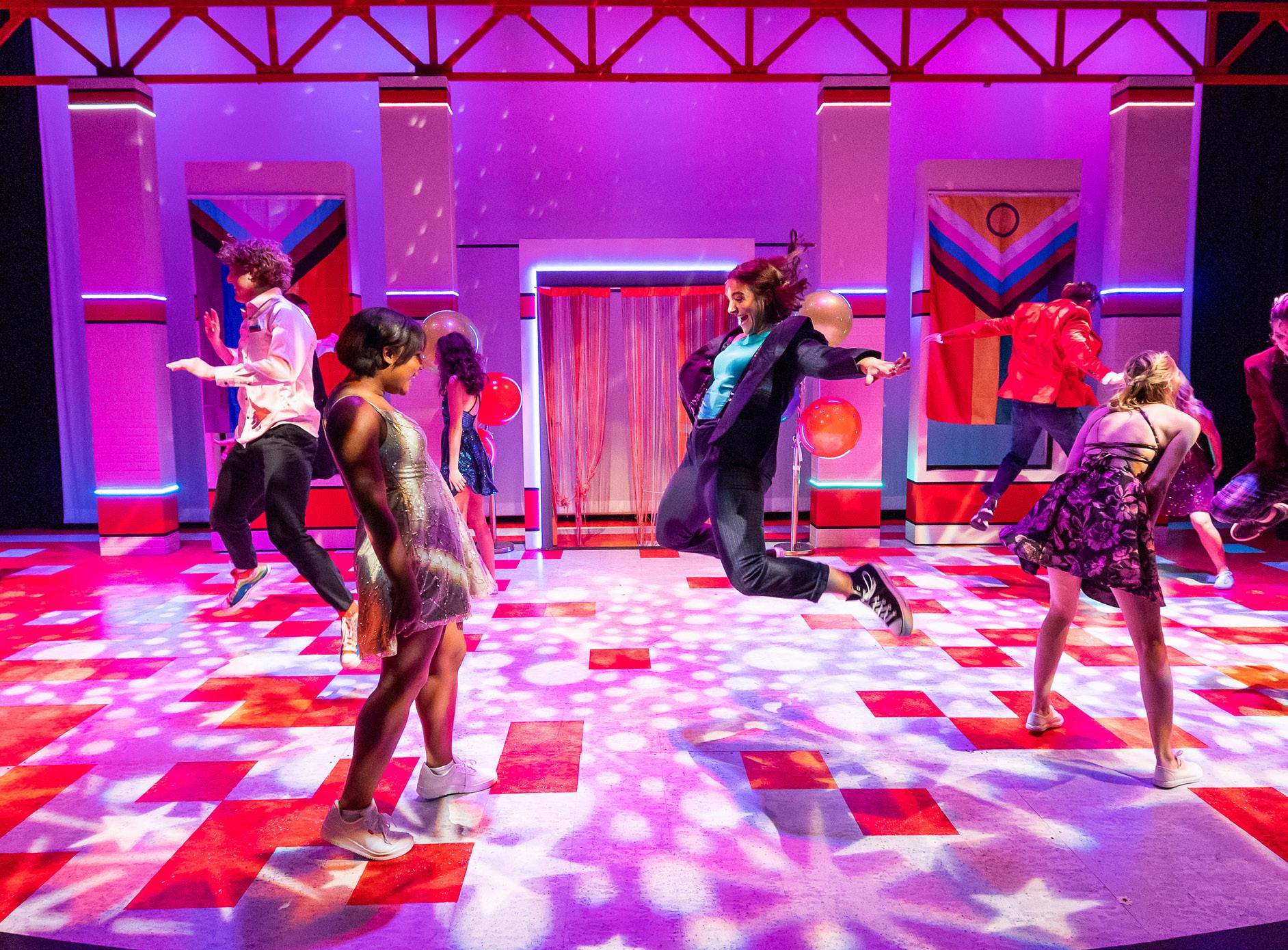

GOAL: SpeakEasy’s staff and artists believe in and demonstrate the principles of equity and justice throughout their work and specifically endeavor to tackle systemic racism and implicit bias within our organization and in the Boston theatre community. Everyone is held accountable for their actions.
• We present our anti-harassment policies at First Rehearsals and other first meetings/ orientations, and provide all seasonal and permanent staff with anti-harassment resources and protocols in their welcome packets.
• In advance of every First Rehearsal, all production team members and artists receive and are required to engage with a Gender Inclusivity training video (“Gender Inclusion at SpeakEasy Stage”) specially crafted for SpeakEasy’s community so that everyone has a shared vocabulary going into each process.
• We have revised our current performance evaluation form (our Success Measures document) to include specific skills and competencies related to equity and anti-racist values and practices through our work with our EDI consultant.
• In advance of the start of the season, we organize a meeting between the season’s directors and our EDI consultant to ensure that everyone has a shared vocabulary and understanding of the importance of this work in the rehearsal room.
• SpeakEasy will work with our EDI Consultant to produce an “Equity at SpeakEasy” training video (see: Board Leadership), which can be shared with anyone joining our organization. This video will be presented to all employees upon onboarding to kick-start their education, create expectations for our commitment to EDI, and to build a shared vocabulary. Employees will also receive our Equity and Anti-Racism Action Plan.

• We will distribute a list of equity and anti-racism resources and materials to newly hired artists, seasonal staff, board members, and volunteers in their welcome packets delivered on their first day of work at SpeakEasy.
• We will provide or highlight, at least once per fiscal quarter, required education and training opportunities for reinforcing SpeakEasy employees’ understanding of equity and social justice issues, as well as specific equity and anti-racist practices, to develop the cultural competency of the company’s permanent staff. This may include bringing in external consultants (or building it into their existing work) to further our education on racial, gender, and disability equity.
• We will explore the possibility of adding a professional development budget into each department so that every member of the SpeakEasy staff has an annual opportunity for professional, personal growth.
• This work will be done by the department heads working within their departments and coordinated by the Artistic Director and Executive Director.

GOAL: SpeakEasy establishes an anti-racist, equitable hiring and recruitment process to identify and welcome candidates from traditionally marginalized and underrepresented communities. In addition, we continually re-evaluate our language and expectations with regards to employee qualifications to reflect these values.
• We are committed to telling stories about communities diverse in race, gender, age, ability, heritage, sexual orientation, socio-economic status, and lived experience. We employ artists that authentically represent the culture of the story being produced.
• We are intentional in our hiring of artists and production teams, so that individuals of all backgrounds are working on shows that represent all cultures (not just hiring artists for shows with which they share an identity).
• We are committed to increasing the racial and gender diversity of the directors and designers we hire, and are intentional in our hiring and season planning.
• We now post a range of salaries or fees on all job listings.
• We have expanded our contact list for recruiting candidates to include a wide range of communities and/or distributing and publicizing job postings.
• We have completed an updated document outlining our hiring process to embed equitable and just practices with an eye towards representation. We have also worked with consultants to develop new language and criteria for job descriptions that avoid bias, specifically rethinking educational requirements and job experience. All staff openings are open to both external and internal candidates in order to provide opportunities for all potential candidates.
• When hiring a vendor, we will expand our search parameters, rather than exclusively returning to those with whom we’ve worked previously. These parameters will include organizations that represent a diversity of race, age, gender, and ability.
• Whenever possible, we will create paid substitute and assistant production positions to allow for schedule flexibility when necessary and to provide learning opportunities for emerging artists.

• We will eliminate unpaid internships.
• We will increase payment for those in our Fellowship Program.
• We will create an understudy/swing performer plan for all productions to protect the health and well-being of our artists.
• We will build more extensive training and mentorship opportunities for production positions (including technicians), investing in the future of emerging artists who do not regularly have opportunities for learning.
• We will define, expand, and publicize resources for recruiting and supporting individuals with disabilities who apply for jobs and/or work for SpeakEasy.
• It is our goal to have the diversity of race, gender, and ability held by our permanent staff reflect the diversity of race, gender, and ability of the population of Greater Boston. We will reach comparable (or more diverse) levels in all staffing.
• It is our goal to have the diversity of race, gender, and ability held by our production and creative workers reflect the diversity of race, gender, and ability of the population of Greater Boston. We will reach comparable (or more diverse) levels in all staffing.
• This work will be led by the Executive Director, working in conjunction with department heads and Production Manager as needed.
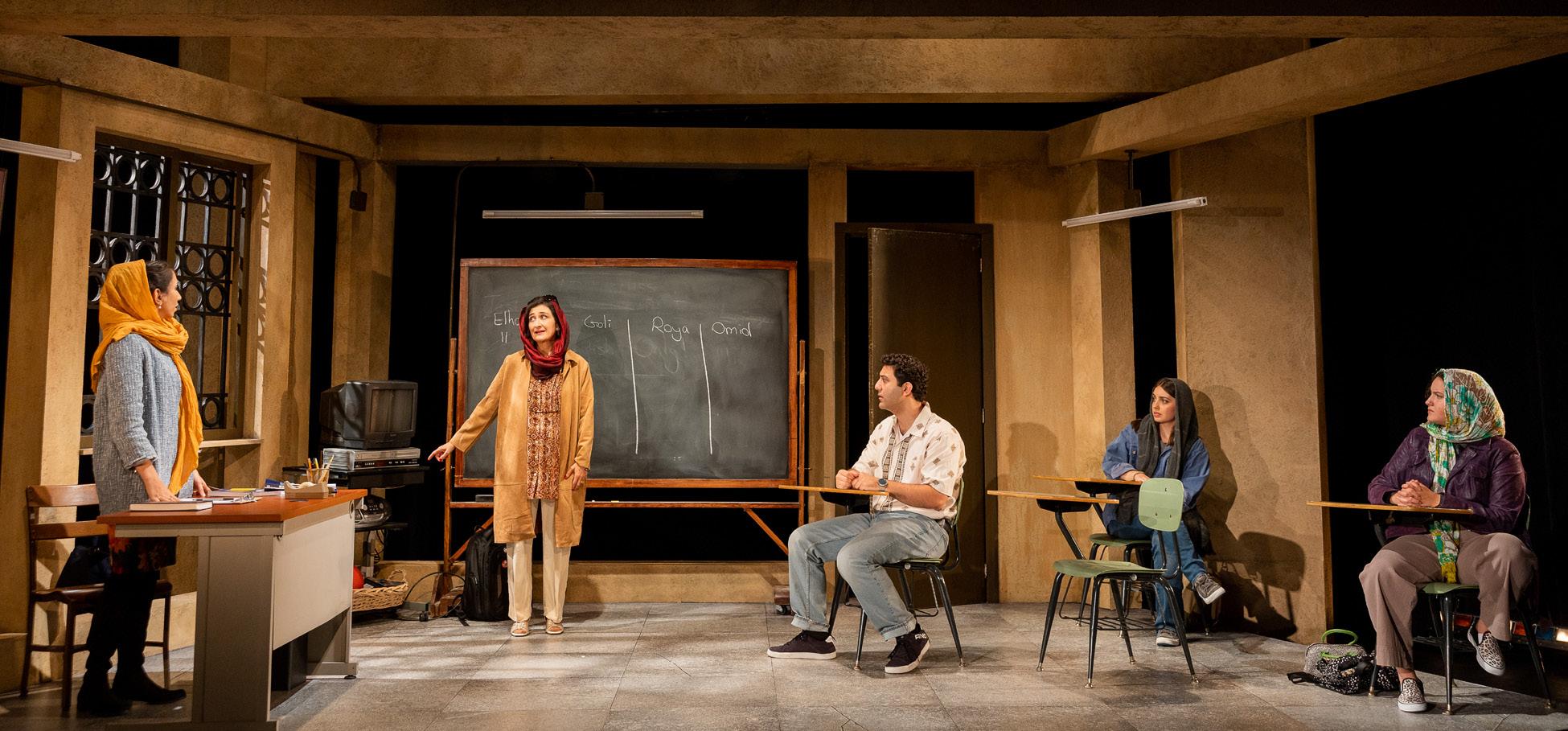

GOAL: SpeakEasy has systems to track demographic data for all of its communities: staff, boards, artists, and technicians. We are working toward an organization whose diversity of race, gender, and ability reflects (or exceeds) the diversity of the Greater Boston community. We are committed to continuously revisiting these statistics and using this information to strategize ways to increase our organization’s diversity.
• We issue a Demographic Data Survey every season for all seasonal and permanent employees to produce an annual Company Census that reports on race, gender identity, sexual orientation, and other group identities.
• We collect anonymous demographic data for job applicants and auditioning artists, and measure cultural diversity and gender representation of the group of candidates. Individual demographic data be kept separate from resumes, and we will monitor the diversity of our pool of applicants before we move to interviewing and hiring.
• Onboarding of new employees will include an anonymous demographic data survey to add to the company census.
• We will work with our EDI Consultant to identify more immediate ways we can use this data to advance our EDI goals, so that we are not simply collecting the information.
• We will revisit the conversation about ways to increase the frequency of demographic survey completion from non-employed participants (e.g. audience members, auditioners, job applicants). Using the brainstorming previously articulated, we will set clear goals and develop strategies to implement this work.
• We will use the Company Census as a tool for evaluating the progress towards the goals laid out in this document and an indicator of when efforts need to be redirected.
• We will include Company Census information in our annual report each year.
• We will measure financial equity for staff and artists, ensuring that those in similar roles are paid fairly and evenly, based on responsibility level and experience.
• This work will be led by the Executive Director, working in conjunction with department heads and the Production Manager as needed.



GOAL: We will program a season that thematically reflects a diverse range of identities and experiences, particularly those relevant to the communities we serve
• We select works that address a wide range of relevant and timely topics, which often includes systemic racism, equity and justice, intersectionality, and identity.
• We produce and invest in stories that challenge the narrow and unexamined scope of narratives about the experience of all races and ethnicities - focusing on joy, innovation, and expression, as well as overcoming hardship and oppression.
• We will continue to use our assessment process for SpeakEasy’s season selection with the following goals in mind:
◊ Equitable gender and racial balance among designers, actors, and crew throughout all productions, regardless of themes or structure.
◊ Selection of stories that represent and engage a wide range of communities and backgrounds.
◊ Authentic representation from the communities whose stories we are telling.
• We will continue to create opportunities to work with and support culturally diverse partner organizations, including for routine co-productions.
• Each season, we hire a Play Reading Committee, composed of artists diverse in age, race, gender, ability, and socio-economic status, to read and provide feedback on the plays on our short list. The goal of this practice is to increase the number of individuals in advisor roles, and to ensure that plays that tell stories of specific communities are read and vetted by members of those communities.
• We will consider the full scope of humanity in all of our programming - and will be mindful of the types of stories with which we ask marginalized communities to engage. For pieces that include illustrations of trauma, we will create a proactive plan (before the production begins) for how to manage the safety and well-being of artists.
• We will explore additional season models, including works outside of our mainstage productions, to add additional programmatic opportunities that amplify a more diverse range of voices in our community and offer more chances for employment for local artists beyond our South End venues.

• SpeakEasy’s artistic team, led by the Artistic Director in consultation with the full board and staff.



GOAL: We offer programming that welcomes and represents people of all abilities through the stories we tell and artists we employ. We provide access to regular performances that meet the unique needs of people with physical, cognitive, sensory, and/or emotional disabilities.
• We work with a community consultant to identify one show a season (if appropriate) that is conducive to a Sensory-Friendly or Relaxed Performance.
• We offer two performances per production that offer the following resources:
◊ Open Captioning
◊ Audio Description
• Braille playbills are available at Audio Described performances.
• We worked with our web developer to make SpeakEasy’s new website accessible to all, including those with visual impairments.
• We will include large-print programs as part of all SpeakEasy productions.
• We will begin to introduce select performances that offer ASL (American Sign Language) interpretation.
• We will bolster our list of partners and contacts to facilitate awareness, outreach, and ticket sales for these accessible performances. In addition, SpeakEasy staff will develop distinct marketing plans for these performances.
• We will explore the possibility of adding select “mask required” performances, specifically making our work accessible for the immunocompromised and disabled communities impacted by the decline of COVID consciousness.

• We believe that accessible programming should be available for all productions, and so we will generate support and interest in our accessibility programs. We will steadily increase the number of performances we offer with these resources per production.
• Community & Artistic Programs Manager working in conjunction with Marketing, Development, and Production staff.
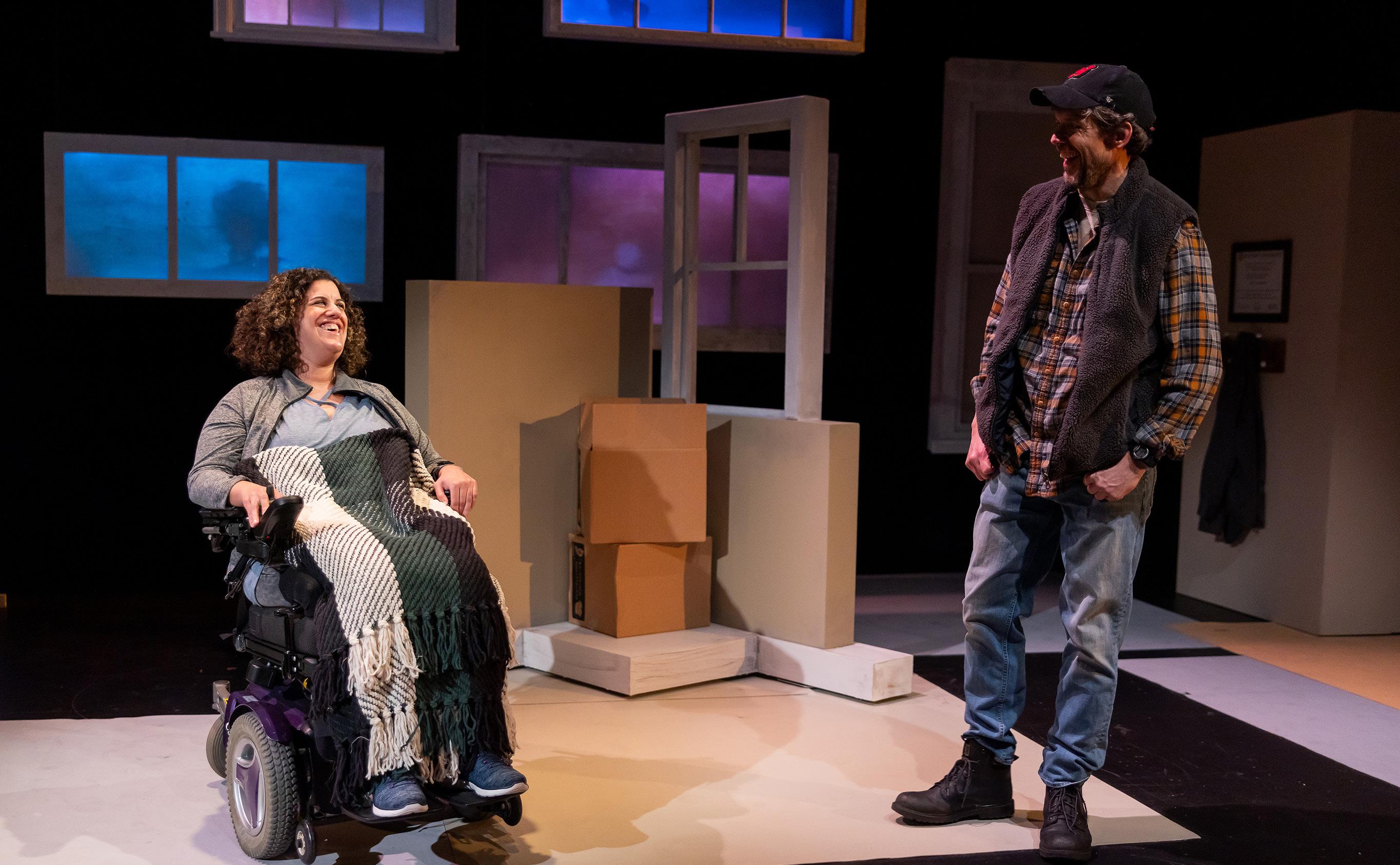
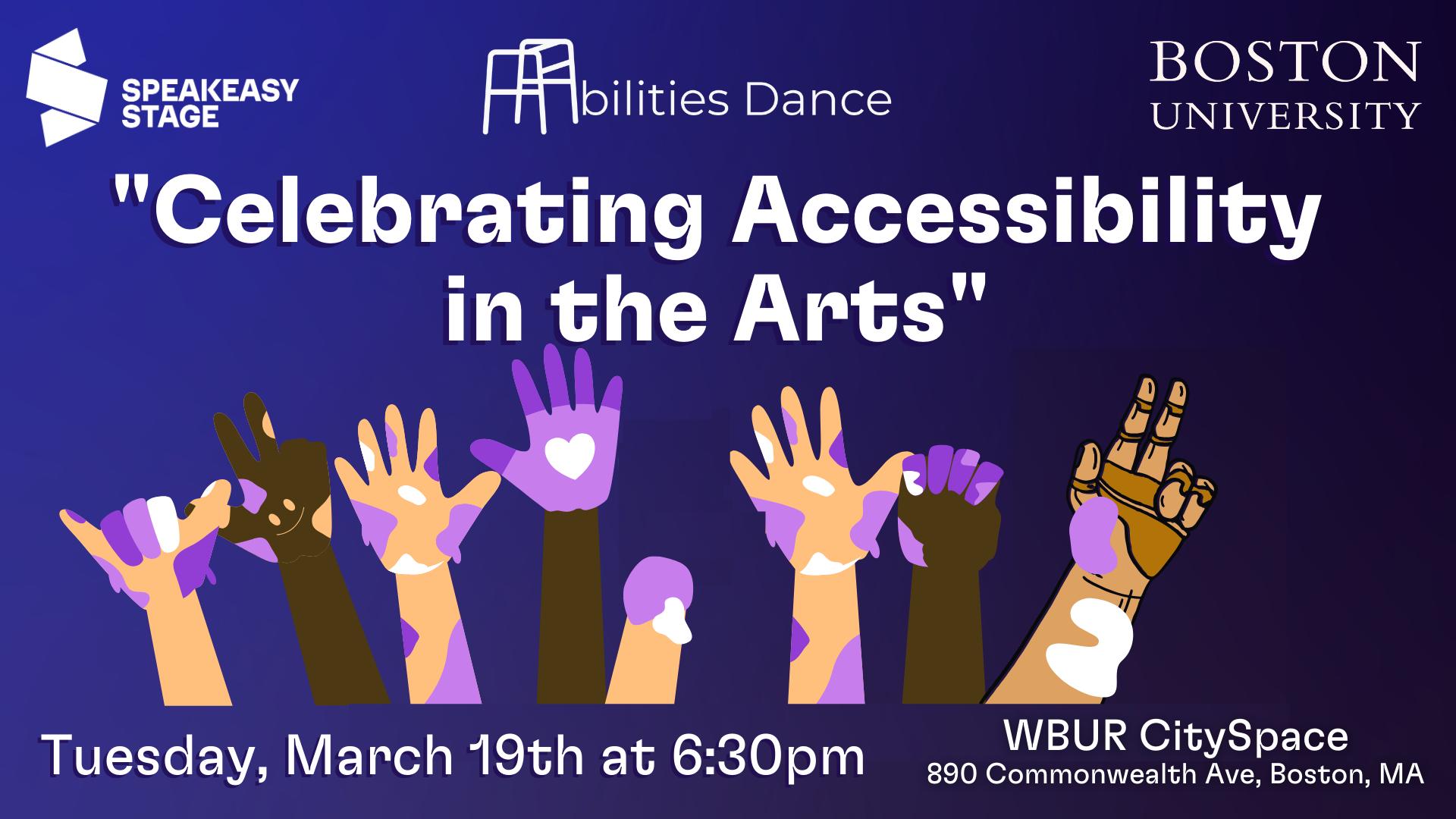



GOAL: All of the company’s communications express inclusivity and use specific and appropriate language and images that encourage participation by patrons representing a diversity of races, ethnicities, genders, and abilities. We affirm our community’s trust in our commitment to equity, justice, and anti-racism practices through our brand identity and fully-accessible website.
• We use all our platforms to amplify and celebrate the voices of artists from traditionally marginalized communities, by focusing on the playwrights, artists, and collaborators with whom we work.
• We utilize digital marketing to expand our reach to our Boston communities and their members.
• We worked with a consulting firm to revise our branding to better reflect who we are today, and how we are evolving as a company committed to equity and anti-racism. This includes new messaging, graphic identity, website, and communications strategies that are welcoming, inclusive, and accessible to all audiences.
• We have routine internal conversations with our staff and board about our Mission Statement and Values to make sure all company members understand the current goals and commitments of our organization.
• We will research and identify outlets that focus their coverage on traditionally underrepresented communities, and we will advocate for dominant media outlets to diversify the shows they cover and the critics they employ.
• We will evaluate and revise our Mission Statement and Values to incorporate our everevolving commitment to equity, justice, and anti-racist practices. We will continue to see our Mission & Values as living documents, revisiting these statements annually.

• We will develop specific communications strategies that can be employed for a wide array of SpeakEasy’s constituencies and identify the language, media channels, and contacts that will be effective.
• We will create a measurement tool for the efficacy of media sources and will review the results seasonally, allowing us to refocus our efforts on the avenues and services most commonly used by our constituencies.
• We will bolster our marketing plan with goals and metrics for outreach to patrons in traditionally marginalized communities, and re-examine our budget to make sure this work is sustainable.
• We will explore additional ways to support our audience through particularly difficult or potentially triggering work, including hiring counselors or moderators to be available post-performance.
• SpeakEasy’s Director of Marketing Communications and Director of Development working with staff in the Community Engagement, Marketing, and Development departments.
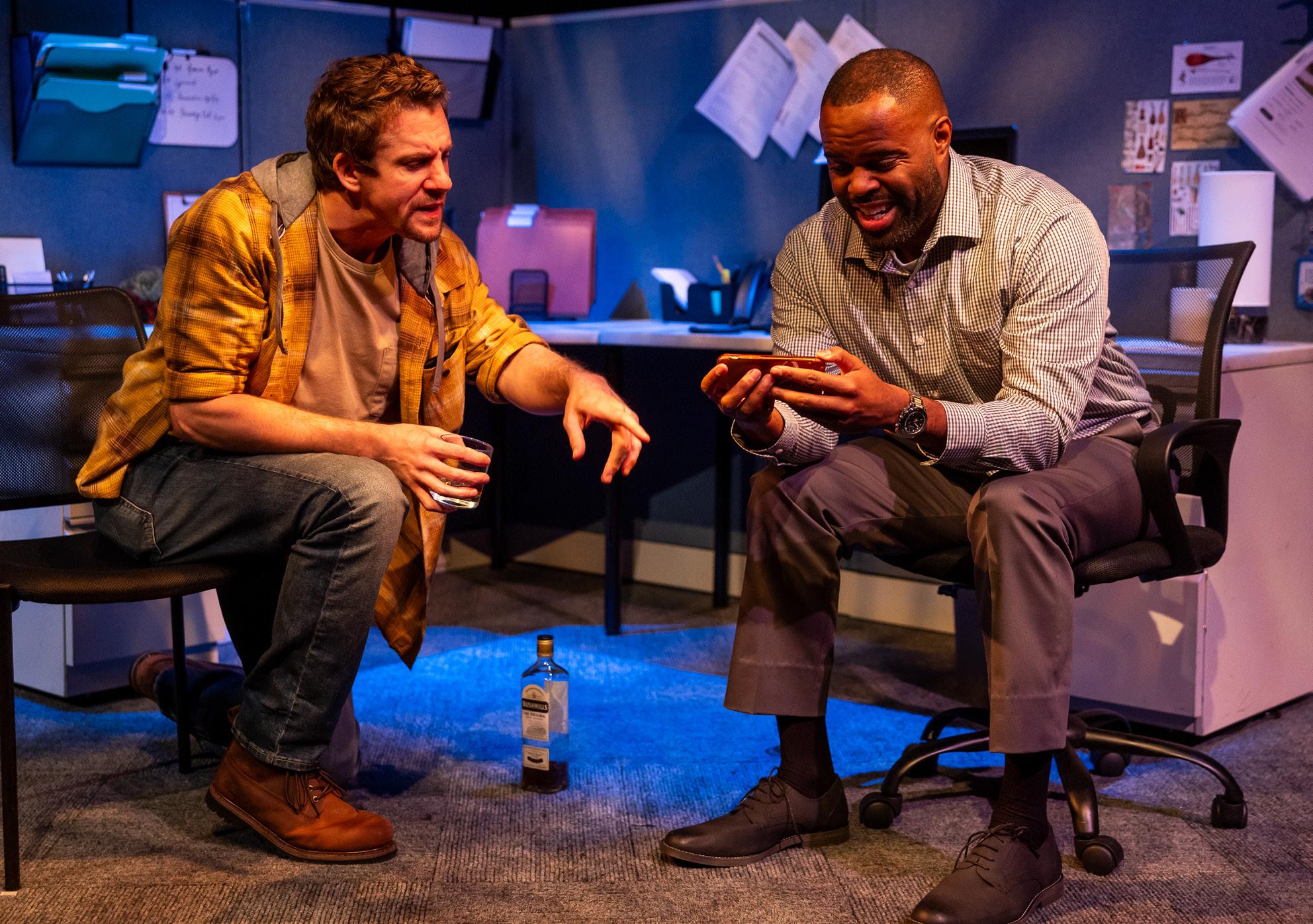

GOAL: We will grow SpeakEasy’s audiences so that our patrons represent a diversity of races, ethnicities, genders, abilities, and socio-economic backgrounds, and we will advance conversations around access, equity, and anti-racism in conjunction with our productions.
• We are expanding our contact list of community leaders, artistic collaborators, and community-based organizations.
• We maintain a Board of Advisors, a volunteer group of community members invested in our work, who advise and support the company in our organizational development, fundraising initiatives, and audience outreach, as we believe in engaging as many voices as possible.
• We co-design and collaborate with community leaders to encourage attendance at our shows and develop audience engagement activities that will promote and advance conversations around equity and anti-racism.
• We deliberately seek gender parity and racial diversity when selecting artists for fundraising and other special events.
• We invest in affordable access, through programs like Mass Cultural Council’s EBT Cardto-Culture program, our student ticket underwriting efforts, our senior and veteran discounts, and other ticketing access programs.
• We changed our ticketing discount tier from “$25 under 25” to “$30 under 35” to increase the accessibility of our productions for younger audiences.
• We developed and implemented a gift acceptance policy that articulates our practice of only accepting gifts from donors, businesses, and/or grant-making institutions that demonstrate behaviors that align with our company’s mission and values, particularly around our commitment to equity, diversity, and inclusion.

• We will devise a system using audience data and company census data to evaluate participation growth in our Access Program.
• We aim to add at least one new funding source each fiscal year that allows us to expand our reach into underserved communities in and around Boston.
• We will establish a yearly audience demographic tool to survey and analyze our success in efforts to reach wider audiences in traditionally marginalized communities.
• We will explore alternative pricing models to make SpeakEasy more financially accessible, including additional flexible subscription options and more frequent “Pay-What-YouWish” opportunities.
• Acknowledging the inherent inequity of the traditional subscription model, we will reimagine the subscription model, moving towards a more inclusive and accessible ticketing structure.
• We will identify and build relationships with leaders of the Indigenous communities in and around Boston to explore avenues towards increased participation within SpeakEasy both on our stage and in the audience.
• We will increase the diversity of race, gender, ability, and age of SpeakEasy’s audiences and donor base each season, and utilize patron demographic data to track that progress.
• Community Programs Manager working in conjunction with Marketing and Development staff.


GOAL: Working closely with the Calderwood Pavilion staff, as much as is possible within our established collaboration, SpeakEasy will work to create an equitable, anti-racist, and inclusive environment for individuals of all races, ethnicities, gender identities, economic statuses, and abilities.
• As articulated above, we will investigate our relationship with the Indigenous land on which we reside, reevaluating our past engagement with Land Acknowledgements.
• We will collaborate with the Calderwood staff to confirm anti-racist practices for all venue and box office staff, including anti-racism, implicit bias, anti-oppression, and bystander training.
• If possible, we will work with the Calderwood staff to develop specific intervention and disruption protocols for harmful behavior.
• If possible, we will work with the Calderwood staff to identify opportunities to increase the accessibility of the venue, including social skills training and a mobility aid emergency protocol.
• As a continuation of the above immediate change, we will explore ways to build a more authentic, impactful relationship (and action-oriented steps) with the Indigenous community. Once identified, we will work with the Calderwood on a distribution plan.
• We will create and maintain a plan with the Calderwood staff to further make our space welcoming to all, including increasing SpeakEasy staff presence at the theater.
• SpeakEasy’s Executive Director and Artistic Director.


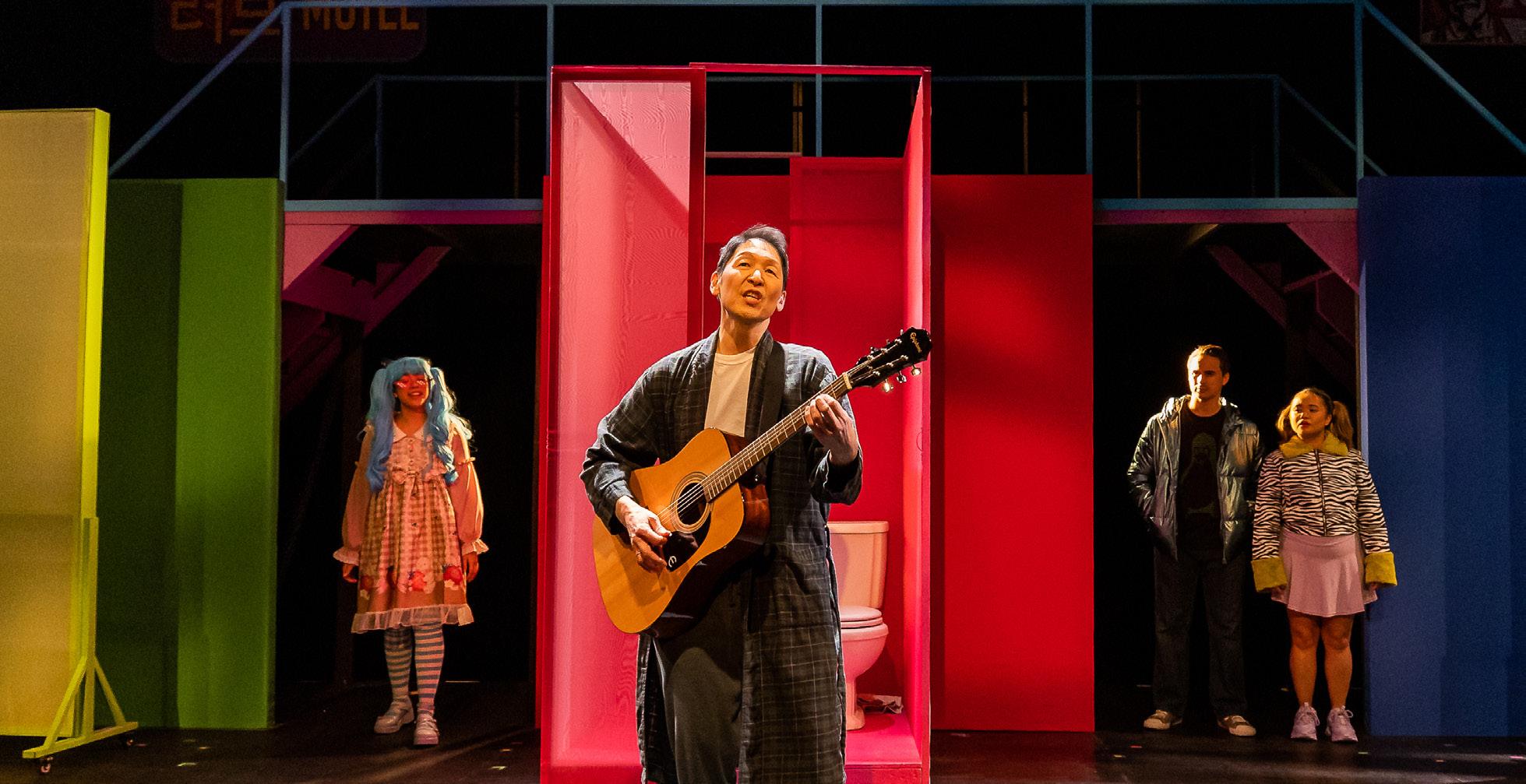
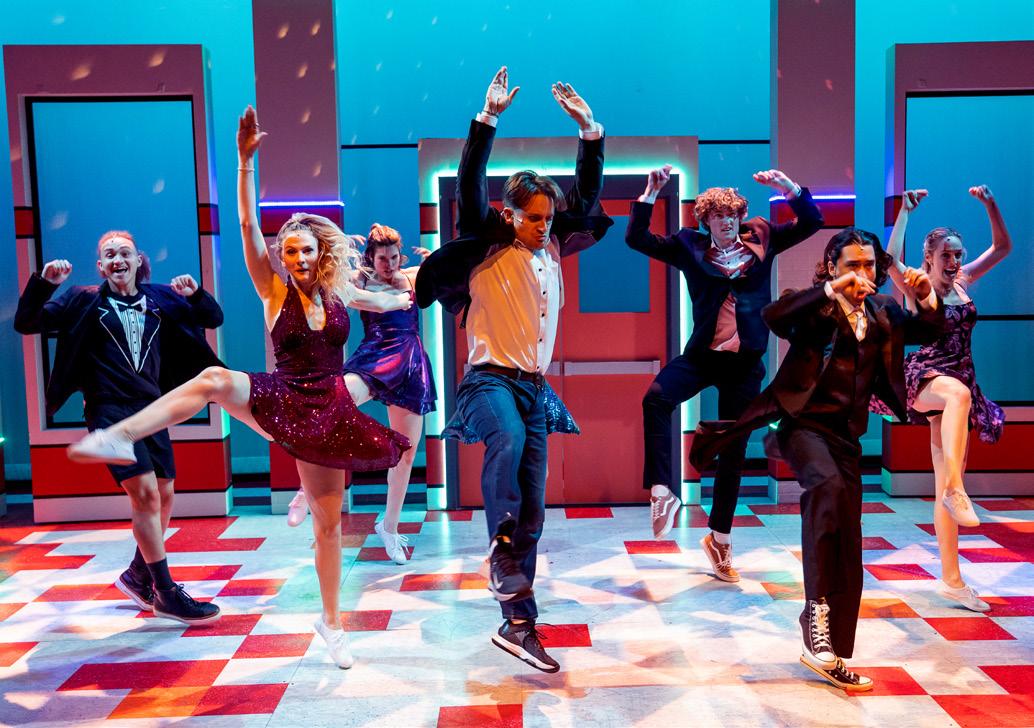

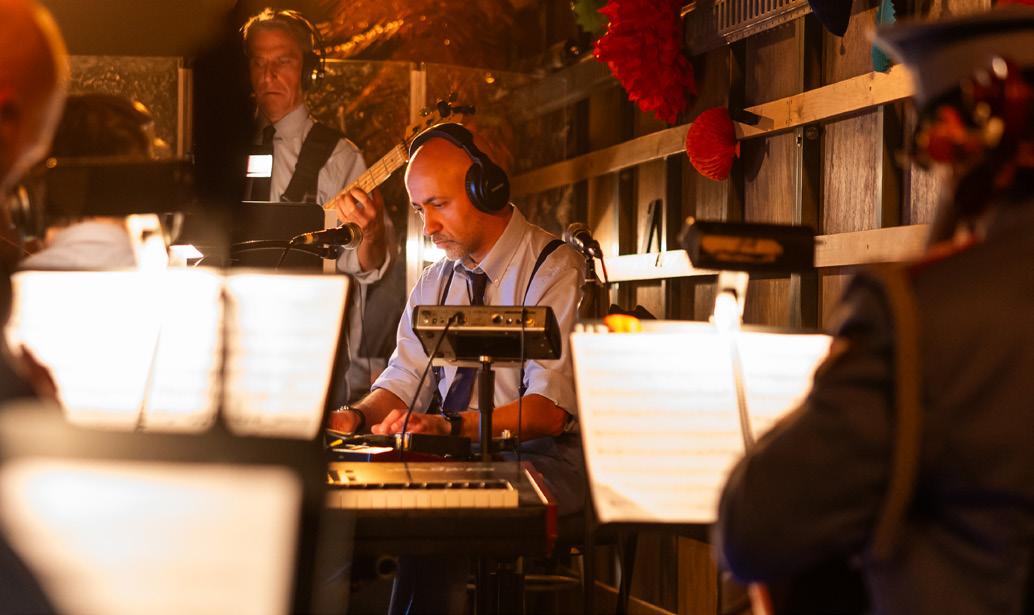
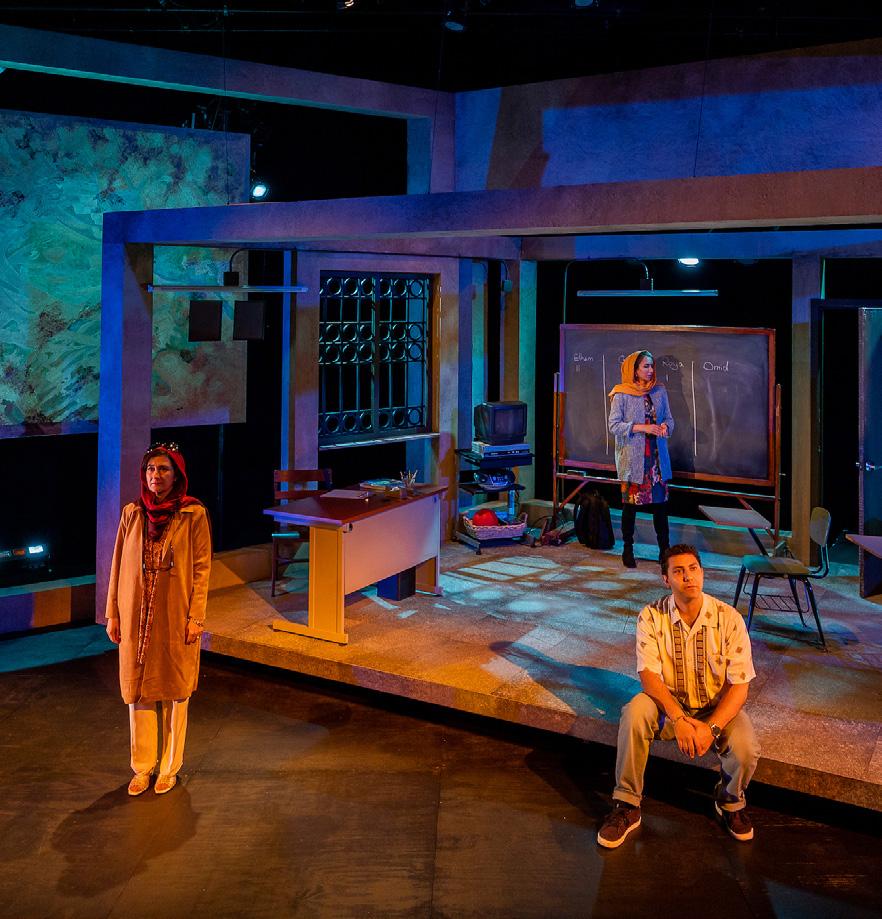


The purpose of the SpeakEasy Equity and Anti-Racism Action Plan (SEARAP) glossary is to emphasize key terms that are important to understanding the full SEARAP document.
We acknowledge that the conversations surrounding social justice can often be derailed by miscommunications and differences in the definitions of the terms being used in these discussions. While we know that there are a mulititude of valuable definitions for each of these terms outlined below, this gossary puts forth SpeakEasy’s working definitions for each of the terms stated - the definitions which give a full understanding of how the SpeakEasy staff and Board implement our mission and the present action plan. In addition, we have included some other helpful definitions for key terms that are already commonly used or whose definitions are not subject to change in the context of our organization or this plan. The glossary is NOT meant to define already-existing identities, but rather presents already-existing defintions that are widely used and accessible to others.
“10 out of 12” – This is the shorthand for the longest technical rehearsal, where actors are called for 12 hours (with a two-hour break). Technicians usually have an even longer schedule, working 12 out of 14 hours.
Ableism - Ableism refers to discrimination and social prejudice against individuals with physical or mental disabilities. Ableism not only classifies people by their disabilities, but often assumes disabled people are inferior to non-disabled people.
ADA - The Americans with Disabilities Act of 1990 (or the ADA) is a civil rights law that prohibits discrimination based on disability. It includes requirements for employment, public entities (and transportation), public accommodations and commercial facilities, telecommunications, and more.
Anti-Racism - Anti-Racism refers to the policy or practice of actively opposing racism and promoting racial equality. Anti-racism encompasses a range of ideas and political actions, which are meant to counter racial prejudice, systemic racism, and the oppression of specific racial groups.
Audio Description - Audio description is a service that makes performances accessible for audience members who are blind or have low vision. It is a real-time account of all the visual elements of a show, delivered live through headphones. Audio description is written to fit into spaces in the dialogue or music so that it does not interrupt the piece, but rather, enhances the experience.
Discrimination - Discrimination is the unjust or prejudicial treatment of different categories of people, particularly on protected classes, which include gender, race, sexual orientation, ability, religion, or ethnicity.
Diversity - Diversity itself is an inclusive term that refers to the range of human differences. This can speak to gender, race, sexual orientation, ability, religion, ethnicity, or other lived experiences.
Equity - The term “equity” refers to fairness and justice and is distinguished from equality. Whereas equality means providing the same to all, equity means recognizing that we do not all start from the same place and must acknowledge and make adjustments to imbalances. The process is ongoing, requiring us to identify and overcome intentional and unintentional barriers arising from bias or systemic structures.

Ethnicity - Ethnicity describes the culture of people in a given geographic region, including their language, heritage, religion and customs.
Gender - Gender refers to the characteristics of women, men, girls, boys, and gender non-conforming individuals that are socially constructed. This includes norms, behaviors and roles historically associated with being a particular gender. As a social construct, gender varies from society to society and can change over time. Gender is not the same as biological sex (as assigned at birth).
Group Identity - Group identity is a type of social identity which is created by the members of a social group. It can be formed by the shared experience, ethnicity, race, values, and beliefs.
Implicit Bias - Implicit Bias is a negative attitude, of which one is not consciously aware, against a specific social group. Implicit bias is thought to be shaped by experience and based on learned associations between particular qualities and social categories, including (most commonly) race and/or gender. Individuals’ perceptions and behaviors can be influenced by the implicit biases they hold, even if they are unaware they hold such biases.
Inclusion - Inclusion is the practice of providing equal access to opportunities and resources for people who might otherwise be excluded or marginalized. Specifically, at SpeakEasy, we believe that when care is put into creating safe and supportive environments, and when everyone is set up with the tools they need to succeed, inclusion can be achieved.
Intersectionality - The concept of intersectionality describes the ways in which systems of inequality based on gender, race, ethnicity, sexual orientation, gender identity, disability, class and other forms of discrimination “intersect” to create unique dynamics and effects.
Land Acknowledgement - A Land Acknowledgement is a formal statement that acknowledges the original Indigenous Peoples of the land, often published or spoken at the beginning of public events. The custom of land acknowledgement is a traditional practice that dates back centuries in many Indigenous cultures.
Open Captioning - Open captioning is a text display that provides a simultaneous transcription of dialogue and lyrics during a live performance, displayed in real time. It is most commonly used by patrons who are hard of hearing, but is a valuable resource to individuals from many backgrounds. Unlike closed captioning, which can be turned on or off, open captioning is visible to all.
Sensory Friendly Performances - Sensory Friendly Performances are adjusted to make theatre welcoming to those with sensory sensitives, like those on the autism spectrum, or who might benefit from a relaxed theatre etiquette. Usually Sensory Friendly Performances have adjusted sound and light cues, fidget materials, clear expectation setting, and a “judgement-free” environment. Sometimes organizations use the phrase “Relaxed Performance” interchangeably, but at SpeakEasy a Relaxed Performance has no changes to the performance, other than the “judgement-free” environment.
Social Skills Training - Social skills training is a therapeutic approach used to improve interpersonal relations. The training focuses on verbal and nonverbal behaviors common in social relationships, and can be helpful in training “front of house” staff (i.e. box office staff, ushers, concession stand workers) in interacting with patrons with disabilities and different social needs.
Systemic Racism - Systemic and structural racism are forms of racism that are pervasively and deeply embedded in systems, laws, written or unwritten policies, and entrenched practices and beliefs that produce, condone, and perpetuate widespread unfair treatment and oppression of people of color.
